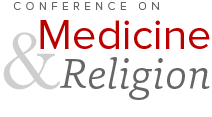Creating a Sacred Space for Bereavement
John K. Graham, MD, DMin, President and CEO, Institute for Spirituality and Health at the Texas Medical Center
Upon the death of the patient, physician and nursing care typically ends with a conference where a chaplain is present and heartfelt compassion is expressed to grieving family members. Often this is the last professional contact the family will receive. However, the consequence of bereavement can affect every area of a person’s life -- physiologically, psychologically, emotionally and spiritually. Abundant studies have reported the health consequences of bereavement with a higher incidence of morbidity and mortality (Rogers & Reich, 1988; and, Stahl et al., 2016). Many bereaved individuals go on to experience persistent complex bereavement disorder (PCMB), a newly proposed diagnosis placed in the Appendix of the 5th edition of the Diagnostic and Statistical Manual of Mental Disorders (DSM-5). Often, physicians refer their grieving patients to a psychiatrist or prescribe medications for anxiety and depression. Surprisingly, psychiatrists often are ill prepared to identify complicated grief and grief-related major depression, and may not always be trained to identify or provide the most appropriate course of treatment (Zisook & Shear, 2009). Although patients may benefit from medications, this does not address the impact of losing a loved one at the personal, financial, social, and relationship levels. Family members and friends will listen to the bereaved share their pain for perhaps two months. After this, they become concerned that the bereaved person will never get over their loss and try to fix them. Unable to share their pain, the bereaved often withdraw and become isolated, escalating the health consequences of their loss (Fried et al., 2015). A bereavement support group can provide a safe, sacred space for bereaved individuals to begin their recovery. This presentation will share a nine-year experience of offering a weekly bereavement support group face-to-face, and as an online experience during COVID-19. Challenges will be considered as well as carefully-measured ways to create a sacred space.
References
American Psychiatric Association (2013). Persistent complex bereavement disorder. Diagnostic and Statistical Manual of Mental Disorders (5th Ed.).Washington, DC: American Psychiatric Association.
Fried, E. I., Arjadi, R., Amshoff, M., Bockting, C., Borsboom, D., Cramer, A. O. J., Epskamp, S., . . . Stroebe, M. (2015). From loss to loneliness: The relationship between bereavement and depressive symptoms. J of Abnormal Psychology, 124(2), 256-265.
Rogers, M.P. & Reich, P. (1988). On the health consequences of bereavement. N Engl J Med, 319, 510-512.
Stahl, S. T., Arnold, A. M., Chen, J-Y, Anderson, S., & Schulz, R. (2016). Mortality after bereavement: The role of cardiovascular disease and depression. Psychosomatic Medicine, 78(6), 697-703.
Zisook, S. & Shear, K. (2009). Grief and bereavement: What psychiatrists need to know. World Psychiatry, 8, 67-74.
References
American Psychiatric Association (2013). Persistent complex bereavement disorder. Diagnostic and Statistical Manual of Mental Disorders (5th Ed.).Washington, DC: American Psychiatric Association.
Fried, E. I., Arjadi, R., Amshoff, M., Bockting, C., Borsboom, D., Cramer, A. O. J., Epskamp, S., . . . Stroebe, M. (2015). From loss to loneliness: The relationship between bereavement and depressive symptoms. J of Abnormal Psychology, 124(2), 256-265.
Rogers, M.P. & Reich, P. (1988). On the health consequences of bereavement. N Engl J Med, 319, 510-512.
Stahl, S. T., Arnold, A. M., Chen, J-Y, Anderson, S., & Schulz, R. (2016). Mortality after bereavement: The role of cardiovascular disease and depression. Psychosomatic Medicine, 78(6), 697-703.
Zisook, S. & Shear, K. (2009). Grief and bereavement: What psychiatrists need to know. World Psychiatry, 8, 67-74.
